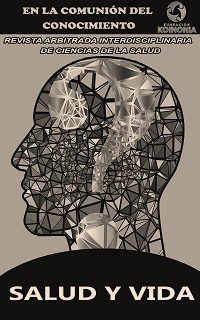covid-19-associated bacterial infections in intensive care unit patients
DOI:
https://doi.org/10.35381/s.v.v7i1.3547Keywords:
Bacterial infections, bacterial pneumonia, respiratory diseases, (Source: DeCS)., (Source: DeCS)Abstract
Objective: to identify bacterial infections associated with COVID-19 in intensive care unit patients. Method: Descriptive documentary. Results and Conclusion: The associated bacterial infections were caused by several microorganisms are Pseudomonas spp , Klebsiella pneumoniae, Escherichia coli, Enterobacter spp the less predominant have been Acinetobacter spp, Staphylococcus aureus, Streptococcus thoraltensis and Candida Albicans to detect these microorganisms has been performed studies in patients admitted after 24 hours the tests performed were in urine cultures, In order to detect these microorganisms, studies have been carried out in patients admitted after 24 hours, tests were performed on urine cultures, blood cultures and secretion cultures, which showed that they are highly negative microorganisms that mostly present multidrug resistance to broad-spectrum antibiotics, which is why the antibiotic of choice in most cases has been beta-lactam inhibitors, aminoglycosides, polymyxin and in order to fight the infection.
Downloads
References
Aguilera-Calzadilla Y, Diaz-Morales Y, Ortiz-Díaz L, González--Martínez O, Lovelle-Enríquez O, Sánchez-Álvarez M. Infecciones bacterianas asociadas a la COVID-19 en pacientes de una unidad de cuidados intensivos [COVID-19-associated bacterial infections in intensive care unit patients]. Revista Cubana de Medicina Militar, 2020;49(3). https://n9.cl/6ivy1
Egli A. Digitalization, clinical microbiology and infectious diseases. Clin Microbiol Infect. 2020;26(10):1289-1290. https://doi.org/10.1016/j.cmi.2020.06.031
Bouiller K, Peiffer-Smadja N, Cevik M, et al. Role and perception of clinical microbiology and infectious diseases trainees during the COVID-19 crisis. Future Microbiol. 2022;17:411-416. https://doi.org/10.2217/fmb-2021-0129
Khan YH, Mallhi TH, Khan TM, Salman M. Advances in Infectious Diseases and Clinical Microbiology during the COVID-19 Pandemic. Medicina (Kaunas). 2022;58(10):1362. https://doi.org/10.3390/medicina58101362
Khan KS, Keay R, McLellan M, Mahmud S. Impact of the COVID-19 pandemic on core surgical training. Scott Med J. 2020;65(4):133-137. https://doi.org/10.1177/0036933020949217
Barahona N, Rodríguez M, Moya Y. Importancia de la vigilancia epidemiológica en el control de las infecciones asociadas a la atención en salud [Importance of epidemiological surveillance in the control of health care associated infections]. Biociencias. 2019;14(1):1-3. https://n9.cl/12j83m
Fox MP, Murray EJ, Lesko CR, Sealy-Jefferson S. On the Need to Revitalize Descriptive Epidemiology. Am J Epidemiol. 2022;191(7):1174-1179. https://doi.org/10.1093/aje/kwac056
Echeverri Toro LM, Cataño Correa JC. Klebsiella pneumoniae como patógeno intrahospitalario: epidemiología y resistencia [Klebsiella pneumoniae as an in-hospital pathogen: epidemiology and resistance]. Iatreia. 2010;23(3):240-249.
Kwiecinski JM, Horswill AR. Staphylococcus aureus bloodstream infections: pathogenesis and regulatory mechanisms. Curr Opin Microbiol. 2020;53:51-60. https://doi.org/10.1016/j.mib.2020.02.005
Cheung GYC, Bae JS, Otto M. Pathogenicity and virulence of Staphylococcus aureus. Virulence. 2021;12(1):547-569. https://doi.org/10.1080/21505594.2021.201878688
Estella Á, Vidal-Cortés P, Rodríguez A, et al. Management of infectious complications associated with coronavirus infection in severe patients admitted to ICU [published online ahead of print, 2021 Apr 30]. Manejo de las complicaciones infecciosas asociadas con la infección por coronavirus en pacientes graves ingresados en UCI. Med Intensiva (Engl Ed). 2021;S0210-5691(21)00081-4. https://doi.org/10.1016/j.medin.2021.04.007
Aguilera-Calzadilla Y, Díaz-Morales Y, Pérez-Bada E, Pérez-Milián J, Morales-Rodríguez B. Coinfección bacteriana y micótica en individuos con COVID – 19 [Bacterial and fungal co-infection in individuals with COVID - 19]. Investigaciones Medicoquirúrgicas. 2021;14(1) https://n9.cl/hi2fd
Monté-Cerero L, Martínez-Casanueva R. Microorganismos aislados en pacientes ingresados. Hospital "Salvador Allende", La Habana. Febrero a junio de 2015 [Microorganisms isolated in admitted patients. Salvador Allende" Hospital, Havana. February to June 2015]. Revista Habanera de Ciencias Médicas [Internet]. 2017; 16(4). https://n9.cl/04gm1
Wiersinga WJ, Rhodes A, Cheng AC, Peacock SJ, Prescott HC. Pathophysiology, Transmission, Diagnosis, and Treatment of Coronavirus Disease 2019 (COVID-19): A Review. JAMA. 2020;324(8):782-793. https://doi.org/10.1001/jama.2020.12839
Salazar Briseño IE, Ley Soler MA, Sosa Hernández O. Urinary tract infection by Streptococcus thoraltensis. Infección urinaria por Streptococcus thoraltensis. Med Clin (Barc). 2023;160(12):e19-e20. https://doi.org/10.1016/j.medcli.2023.02.018
Published
How to Cite
Issue
Section
License
Copyright (c) 2023 Alegria Yolanda Borja-Urrea, Adisnay Rodríguez-Plasencia, Ariel Romero-Fernández, Alina Rosa Soria-Acosta

This work is licensed under a Creative Commons Attribution-NonCommercial-ShareAlike 4.0 International License.
CC BY-NC-SA : Esta licencia permite a los reutilizadores distribuir, remezclar, adaptar y construir sobre el material en cualquier medio o formato solo con fines no comerciales, y solo siempre y cuando se dé la atribución al creador. Si remezcla, adapta o construye sobre el material, debe licenciar el material modificado bajo términos idénticos.
OAI-PMH: https://fundacionkoinonia.com.ve/ojs/index.php/saludyvida/oai.









